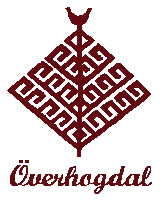2. Earliest emigrants, The families from Skugg/Bäcken
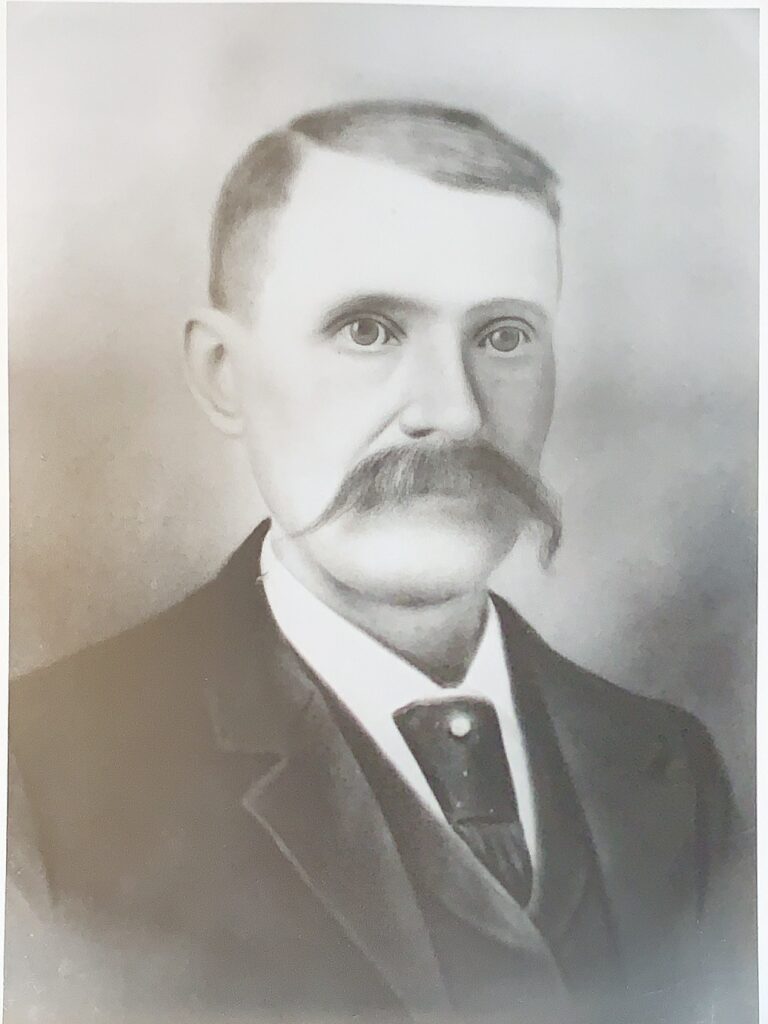
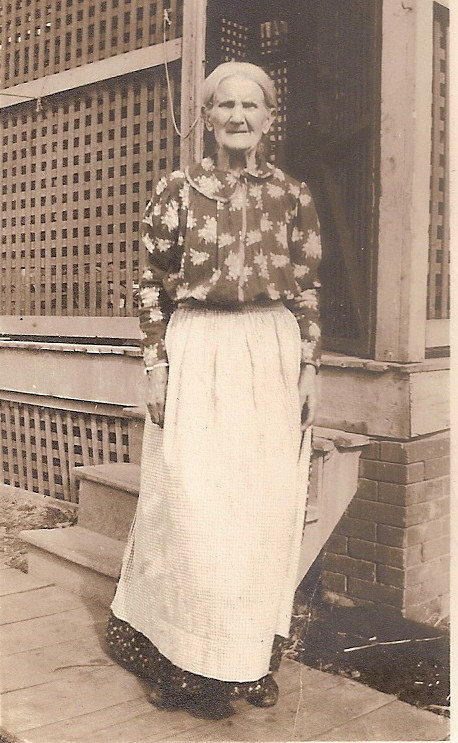
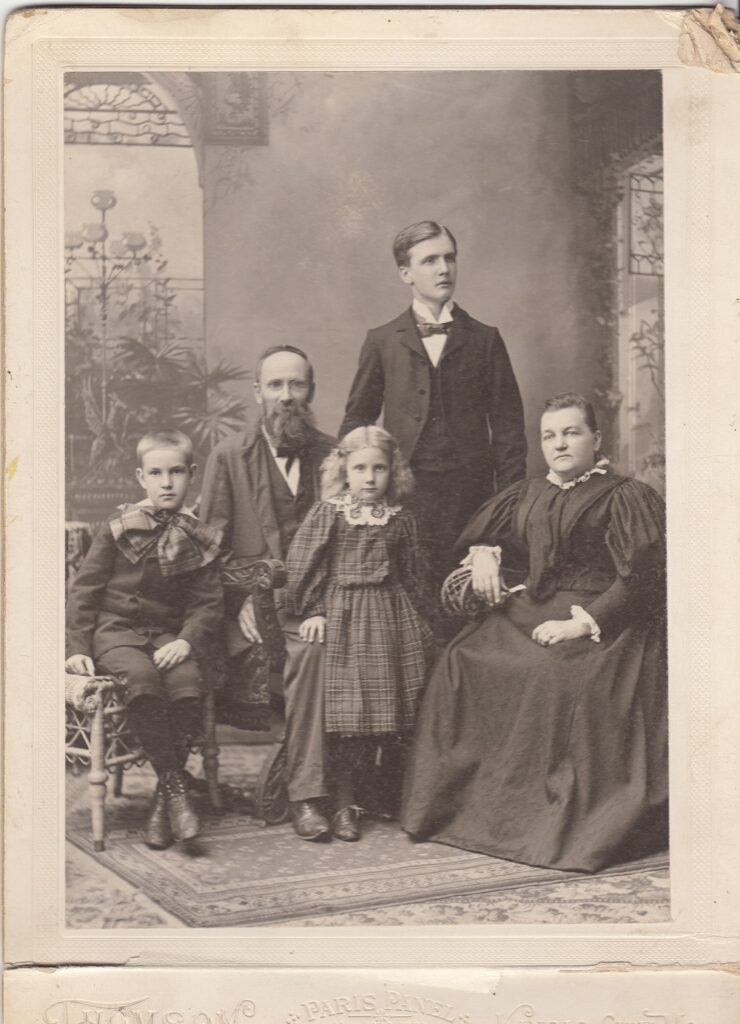
A bid to survive: the families from Skugg/Bäcken
Along with Pehr Jönsson’s family, three children of another family emigrated. This is a look at their family. I first learned their story from Thomas Sievertsson, who inspired my desire to learn more of my forefathers. Much of the information here came from him.
Mats Olofsson Dahl (1792-1843) was born in Överhogdal, the second son of Olof Johansson, farmer at the Skugg farm. Skugg was one of the oldest farms in Överhogdal. By the early 1800’s the farm had been divided into two from its original size but was still a good sized place. Mats’ parents had enough resources that he was able to attend school for a few years near Östersund.
He had more education than most of his peers, which served him well.
In 1821 Olof died and Mats took over as farmer. I don’t know why he, and not his older brother got the farm (his older brother however settled in Ytterhogdal and did ok for himself). As well as being a farmer, Mats’ education paid off and he became the ”sockenskrivare” (parish writer), one who could help people in the community if they needed a document written or read. He also served as ”fjärdingsman”, a local policeman.
In 1929 Mats married Sigrid Mårtensdotter (1805-1865) who was from Ytterhogdal. She was the daughter of a farmer who was also an Innkeeper, originally from Älvros. Later that same year they had their first daughter. In all, they had seven children, who all survived. Their children were Ingrid (1829), Sigrid (1831), Karin(1833), Olof (1835), Mårten (1838), Sven (1840), Matts(1841).
When Matts was only one, his father died at the age of 50. In the death records it said he died from a cold. Sigrid had seven young children, and her oldest son was still a child, so she hired men to help with the farm chores. A woman in Sigrid’s position, as head of a farm, even with children, was a desirable ”catch”. The new husband would get control of the farm until the oldest son came of age and married. He could *”keep” any new land he had broken during his time as head. It is clear that Sigrid had interest. She gave birth to Ella, born more than a year after Mats death in 1844. However, Sigrid did not marry the father, or disclose who he was. She accepted the shame and scorn of the day, of having an illegitimate child, and of being ”old enough to know better!”. Because she was in charge of the Skugg farm for her childrens’ sake, she had the power to reject her suitor. (since Ella’s father was not named, her patronym is different depending on who wrote the record, sometimes Persdotter, Matsdotter, Olofsdotter!)
However in 1847 she did remarry, to widower Olof Persson. Olof had been raised on the farm Nylannet. His only daughter and her husband took over this farm in 1846. Olof became the farm of Skugg until one of Sigrid´s sons was old enough and married. Sigrid´s oldest three daughters each left home för Ytterhogdal where they worked as maids once they turned 15 so weren´t at home for long after this marriage, but Olof would have been the only father the younger children knew.
There were complications regarding ownership of Skugg, as Mats had not been the oldest and he had a younger brother whose son was now claiming some part in the estate. He ended up taking over the main part of Skugg and Sigrid retained ownership of a third of the farm. She and Olof created the new farm Bäcken on land that had been part of Skugg and likely had a few buildings already erected when they moved there. The farm was not really Sigrid and Olof´s, but they were holding it in trust för the seven children of Mats Dahl.
More years passed. The oldest three daughters married in Ytterhogdal. Three of the sons learned professions: Olof became a shoemaker, Sven became a tailor and Mårten became a blacksmith. In 1864 Mats married Sigrid Larsdotter and was the first son to marry. He took over as farmer. He did not get to be farmer for long however. 1865 brought drastic changes. Sigrid died in April. Olof died in June. Mats sold the farm and became a crofter. A crofter does not own the bit of land he farms and this was a big step down the social ladder. The most likely reason is he could not afford to keep the farm. Perhaps he had a good offer for it and he needed to pay his siblings their share of their inheritance. There was now no core home in Överhogdal left for any of them, and the brothers and Ella were scattered over the village.
In 1867 the crops failed. This would be disastrous to everyone, but more so for those with no resources. Craftsmen had little business when money was tight. It must have been a miserable year. Mårten had married and their first son died that year. Mats lost a son in early 1868. They wondered if they could survive. 1868 was shaping up to be a year of drought as well.
But, an interesting possibility presented itself. Sven married Anna Persdotter in 1867 and her father Pehr Jönsson was moving his family to America. He wanted Anna and Sven (and newborn daughter) to come as well. I don’t know for how long Pehr had been planning this but the year of famine might have made the decision easier for him.
This drastic move offered hope to Mats, Sigrid and Ella as well. There was little in Överhogdal to hold them back. I don’t know how they found the money to emigrate, I even wonder if Pehr Jönsson lent them money. But we know that they emigrated with the others.
Matts, Sigrid (Sarah) and son Ola (William) all settled initially in Montrose Iowa, where Sven and Anna settled. In 1870 Mats was working as a labourer. Sarah died in 1875 so for a few years it was just Matts and Willie on their own. Matts remarried Augusta Olausson five years later and they had eight more children. He worked as a carriage painter in Kansas and Missouri. Augusta was 19 years younger than Matts and lived as a widow for 42 years after he died in 1912!
William, Matts’ son was not yet four when his family left Överhogdal. He married Lizzie Matthali in 1893 when he was 28 and they did not have children. He worked at various jobs, including in a laundry, and as a shipping clerk. He died when he was 44, before his father. Both he and his father’s family used the surname Matson in the USA.
Ella worked as a maid and likely was living with her brother Mårten when she made the move to America. She was in Iowa, probably in Montrose along with her brothers to begin with and changed her name to Edith Matson. Either there or in Keokuk Iowa, she met and married Erick (or Edward) Hedman in 1870. They lived here until 1879 then moved to Kansas city, Kansas. In 1880 Edward worked as an express driver and they had three children. The youngest was 7 when Edward died. Ella lived with one or the other of her children through the rest of her life, all in Kansas city. She died at 76 in 1920.
Only two children of Mats and Sigrid stayed in Sweden. Sigrid married farmer Pål Persson in Flor, Ytterhogdal. She died in 1870 following childbirth. Several of her children later emigrated. Mårten married Brita Olsdotter from Flor. Initially they lived in Överhogdal where Mårten worked as a blacksmith. Later they moved to her family farm in Flor. Mårten and Brita had only one son who took the name Olof Hovedal. You kan read the letter he wrote to his mother when he emigrated in 1919. (Hovedal letter).
The oldest daughter Ingrid married Brita’s brother Olof Olsson ”Sjuls” and they initially lived at the farm in Flor. In 1869 they emigrated with their five daughters and settled in Iowa. I don’t think things were easy for them here as well. Sometime in the early years their 4th daughter died.
Their third daughter was adopted by a wealthy, childless couple,when she was around five. Olof returned to Sweden in 1877 for a few years. He was back in Kansas city for a year or so in 1880-81 but returned to Sweden on his own. Ingrid (Irene Olson) ran a boarding house for some time and lived until 1918. Her daughters all stayed in Kansas city. Olof died in Sweden in 1892 while living with his elderly mother.
Karin married Jonas Persson Skanse and their story is told in ”Settlers to Cooperstown”. They emigrated in 1888.
Olof also eventually emigrated. When his siblings left Sweden in 1868-69, he began an eleven year series of moves around Sweden trying to survive. He married Sigrid Martha Larsdotter in Bodsjö in 1872 and they started a family. By the time they moved in 1881, their two daughters had died. An infant son died in the crossing, so only their son Lars, survived. They settled in Kansas city, Kansas and Olof worked as a shoemaker. Eventually they had two more children.
After Olof’s death in 1910, Martha (or Sarah!) lived with either of her younger two children. She died in 1941 in California at 92.
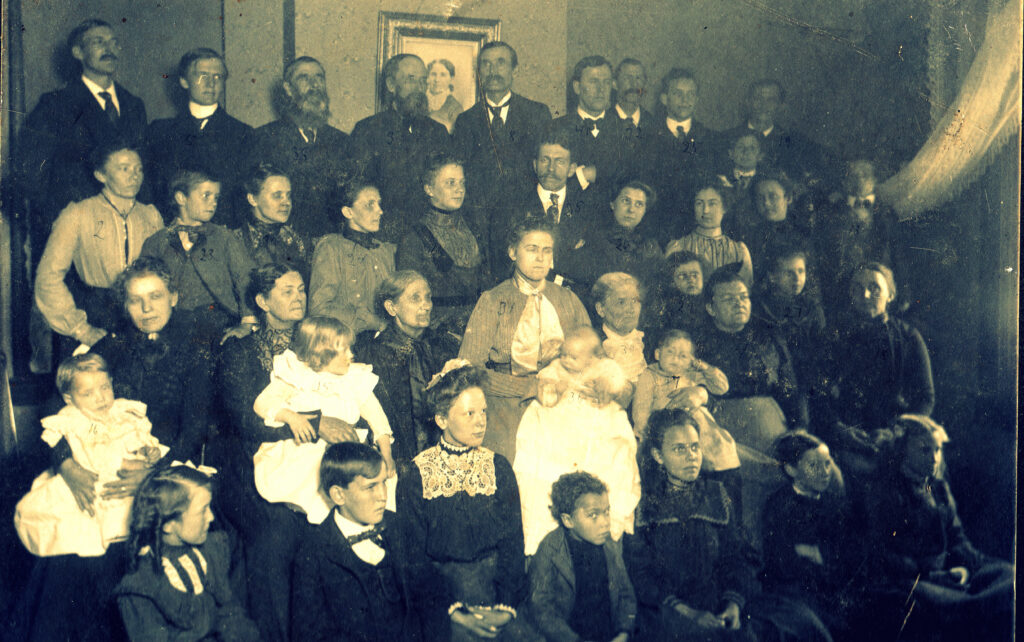
I met two distant cousins, descendents of Olof Matson and Irene Olson, thanks to DNA about ten years ago. We had some interesting emails back and forth with Thomas, who helped piece together the family. Carol Christ was a great great granddaughter of Irene Olson and she had this picture and I also found this picture in my family. Carol felt the gathering was on the occasion of Irene’s 70th birthday, held either the end of 1899 or 1900 (she was born in Nov 1829) in Kansas City.
Carol identified many from her family and Ruth Magnuson (great granddaughter of Olof) and I did a few more. We were not 100% sure about everyone so it would be interesting if others can name a few more! I know that none of the Ringwall’s are in the picture and Peter Skanse is the only child of Jonas and Karin I recognize. He was recently widowed at this time. It is possible he has children here but I think not. Carol said that her great grandfather Carl Bergman was quite swarthy. He was from Sweden. So she identified the children who look to be black as his and his wife Sarah’s.
families in attendance: Irene Olson and her daughters. Belle and perhaps Emma Blom (who was adopted out of family), Daughter Sarah and Carl Bergman with children Linneus 15, Olga 13, Edith 11, Helen 6, Ray 3, Herbert 1. Daughter Anna and Andrew Zander and children Ella 16, Katherine 15, Paul 11, Leo 9, George 7. Olof and Sarah Matson, children Lawrence 24, Ethel 9 and John 12. Mats Matson and 2nd wife Augusta? Younger children were Rachel 10, Thomas 7, Ruth 3, baby George. (there were 4 older children who could also be here) Karin and Jonas Skanse, Peter Skanse. Ella Hedman (widowed). Her daughters would have been 15 and 25 and may be in the picture.
Back row from left: ?, Lawrence Matson, Jonas Skanse, Olof Matson, Mats Matson, Peter Skanse, ?, Linneus Bergman?, ?. (one of the unknowns could be Andrew Zander, Paul Zander 11?)
next row, really unsure. Could include Irene’s sister Edith (Ella) Hedman and her two daughters,the older granddaughters, daughter Emma Blom. The man in middle I think might be Carl Bergman. Olga and Helen Bergman the children at the end of this row.
Sitting: Sarah Bergman, Anna Zander, Irene Olson, Belle Olson (or Augusta Matson?), Karin Skanse, Sarah Matson, maybe Augusta Matson next to her or Belle? Front row: likely Ethel and John Matson, Ray and Edith Bergman, Thomas and Rachel Matson. The children being held are likely young Matsons since Bergman children were swarthy. However could be Herbert or Ray in Karins arms.

